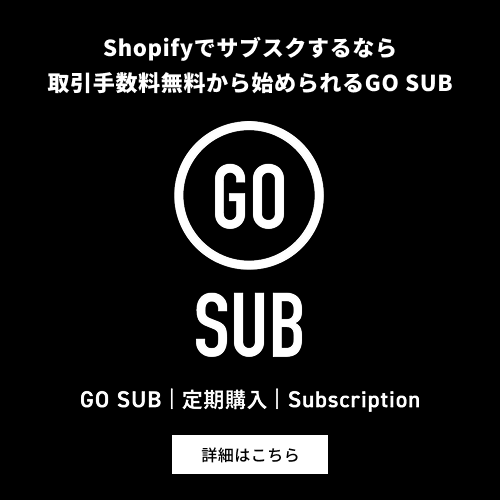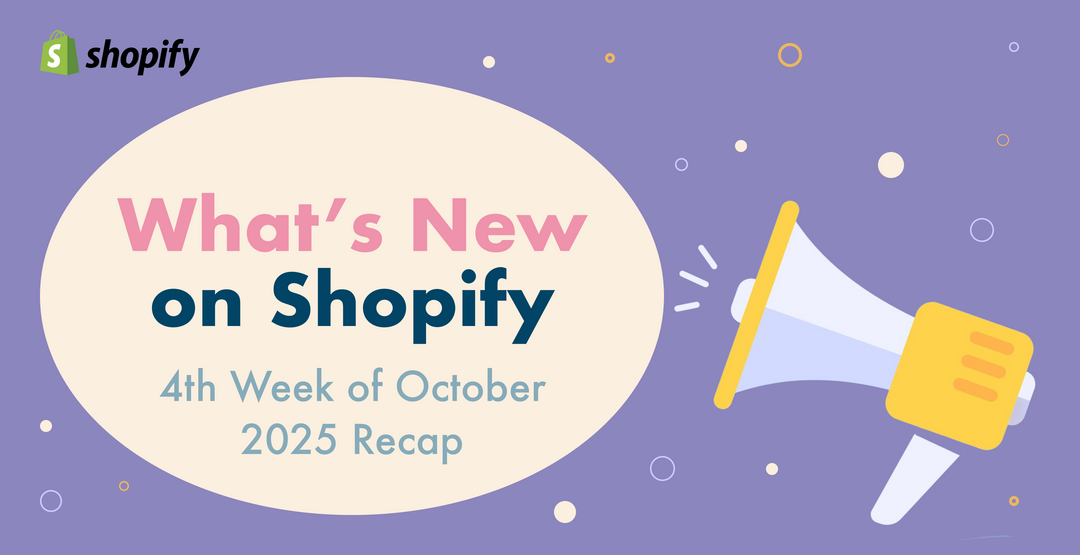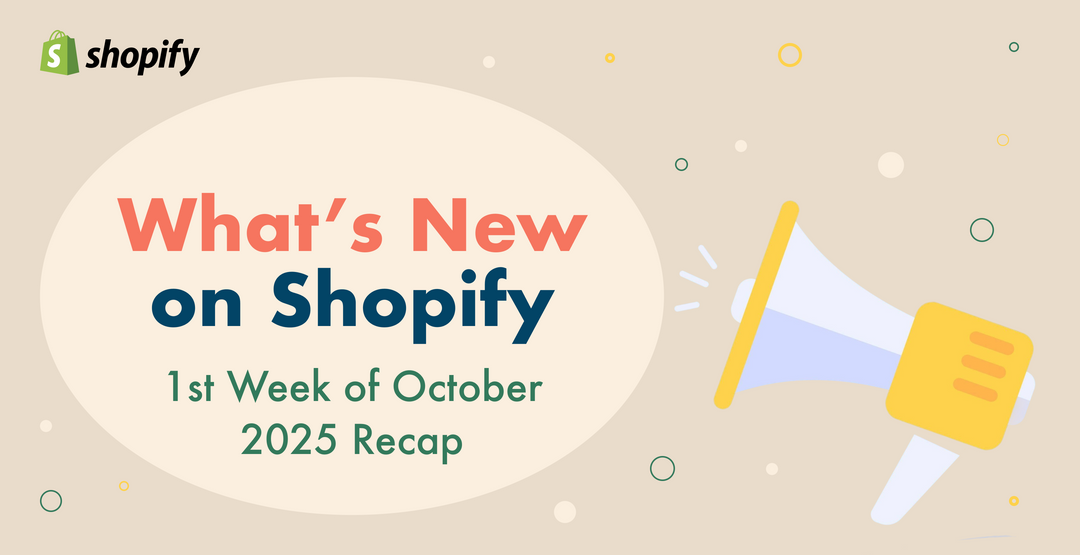Shopify Update Summary【First Week of August】
The last update articleHere
In the first week of August, Shopify saw another feature evolution.
This update is more about the appearance and design. "Ease of operation" and "greater freedom" is the main character.
Analytics Dashboard You can organize it to your liking
Checkout and customer accounts Editing is now more intuitive
Eligible for automatic discounts You can precisely control
API update There are also specification changes that operators should be aware of, such as:
I have the impression that the parts of my daily work that I used to think "this is a bit troublesome..." have been improved in subtle but definite ways👍
This time, we will introduce the changes How it can be useful in practice I will explain it briefly from this perspective.
Small improvements add up and can make a big difference in your daily work efficiency.
Let's stay up to date with the latest information and make your store operations smarter!
table of contents
1. “Custom Section” added to Analytics dashboard!
📝 Update Overview
- In the Analytics dashboardCustom sections allow you to freely group metric cardsis now available.
- For example, you can organize data into groups based on business themes, such as "Sales/Average Order Amount," "Repeat Customer Rate," and "Results by Advertising Strategy."
- The order of the cards can also be saved, so it can be used as an operational template.
💡 This is convenient!
- Instantly access the necessary metrics for each team or department → Easier reporting and decision-making!
- You can switch dashboards for each initiative and set regular check items to make it a habit.
- You can optimize the visibility to your liking by adjusting the display/hide and order of cards.
👉 We recommend that you first create three sections for "Sales," "Advertising Results," and "User Retention," and then compare and adjust them as you go.
2. Shopify Flow now supports "GraphQL Admin API 2025-04"!
📝 Update Overview
- The automation tool "Shopify Flow" is the latestGraphQL Admin API (version 2025-04)has been updated to.
- New fields such as "createdAt", "updatedAt", "endsAt", and "status" can now be used within flows.
- The enhanced API system makes it easier to create stable automation flows.
💡 This is convenient!
- Triggers based on date, time, and status can be set in detail, such as "after x number of days" or "when the status is x."
- Subscription management and branching processes based on member status can now be easily implemented, improving operational accuracy.
- It seems like the foundation is in place to allow for flexible response to future updates.
👉 Because the number of condition fields has increased, we recommend that you start by checking the operation of your existing flow.
3. Easily place app blocks at checkout or on your personal page!
📝 Update Overview
- In the Checkout and Customer Account Editor, under the Sections tab, add the App block.Visual drag-and-drop placementImproved to make it possible.
- The preview and the actual display are consistent, minimizing placement errors and discrepancies.
- The UI of the management screen has also been streamlined, allowing for intuitive operation.
💡 This is convenient!
- The intuitive UI reduces setting errors and increases setting speed.
- It's easy to replace blocks during AB testing or campaigns! "Switch to a different idea at this time" is smooth.
- The design is friendly not only to developers but also to marketing and operations teams.
👉 You can see at a glance where each block is, so you can set it up for the first time with ease.
4. You can edit orders that include customs duties and import taxes!
📝 Update Overview
- Unshipped orders that have customs and import taxes attached,You can edit items by adding or canceling them.It has become.
- Taxes and duties will also be automatically recalculated after editing.
💡 This is convenient!
- We can quickly respond to situations that often occur in international sales, such as "A correction request has been made, but the work is still in progress..."
- This reduces delays and mistakes in decision-making during phone and chat support, leading to customer satisfaction.
- It can also be smoothly integrated with the return and exchange operation flow.
👉 It's a good idea to clearly state in your operations manual that "editing is only possible if the item is in the 'unshipped' state."
5. Automatic discounts, you can now choose the target!
📝 Update Overview
- Automatic discounts can now be set to apply to all customers, specific segments, or specific customers.
- POS Pro also allows for exemptions on a store-by-store basis, allowing for more flexible policy design.
💡 This is convenient!
- Discounts can be set for "first-time buyers only," "repeated users only," or "VIPs only," allowing for strategic promotions while keeping an eye on labor costs.
- It can be used both online and in physical stores, making it easy to adjust campaigns for each channel.
- It also becomes easier to verify how effective the measures you have spent advertising money on are.
👉 You can start by setting up an automatic discount for VIP segments only and testing the effectiveness on a small scale.
6. Shopify Collective expands to support 36 countries (including Japan)!
📝 Update Overview
- Shopify CollectiveThe service area isExpanded to 36 countries (including Japan)I did.
- This system allows you to sell partner products and open separate stores for your own products without inventory risk.
💡 This is convenient!
- Flexible sales promotion is possible, such as stocking popular products from other stores for a limited time or expanding your own products to new channels.
- It's a great first step in cross-border expansion, as you can try it out with little risk.
- It can also be used as a foundation for building partnerships, making it easier to open up new sales channels.
👉 If there is a country or category that interests you, we recommend starting with a small amount as a trial and seeing the reaction before expanding.
summary
This Shopify update is more about "Ease of use every day" and "Improved flexibility" The content was very illuminating.
-
Ease of placement
Reordering sections and app blocks has become more intuitive. You can now quickly move something up a bit on the admin screen.
-
Editing freedom
The ability to freely add custom elements has expanded when editing analytics dashboards and products/pages. It's now easier than ever to complete everything using just the admin panel.
-
Easy to view data
It makes it easier to organize analytics information, allowing you to access the numbers you want to know in the shortest possible time, making it easier to decide on your next measures.
💡 one thing
Rather than being a "change in appearance," these improvements seem to be a major shift in the direction of reducing the stress of daily operation.
especially,Easy layout adjustmentorData organization functionThis will be extremely helpful for those who use both physical stores and e-commerce, or those who handle a large number of products.
If you have any questions about how to use this update, please feel free to contact us.
I will answer your questions with actual configuration examples and operational scenarios, so I hope you will find it useful.
📝This article was brought to you by GO RIDE Engineer Kai.
Stay tuned for next time! 🏄♂️
About GO SUB
For more information about GO SUB, click here
We are constantly updating articles about GO SUB's new features and how to use it!




















![[Shopify Plus] Automate your sales! Schedule theme and price changes on Launchpad and important points to note](http://goriderep.com/cdn/shop/articles/launchpad_788bf14b-1e5a-43b8-8691-f82c13dd73fb.jpg?v=1764920808&width=600)
![Shopify Update Summary [4th Week of November] - Strengthening Support When in Trouble + Development Progressing Steadily](http://goriderep.com/cdn/shop/articles/update-3_ac2f902b-157b-4c8c-b934-5cd24e0642fe.png?v=1764195067&width=600)

